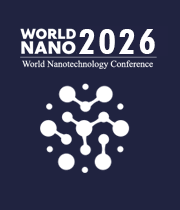Nanooptics And Nanospectroscopy
Nano vaccines, created using nanotechnology, are a new medical development that offers the potential to revolutionize the way vaccines are produced and administered. Nano vaccines are tiny particles, about the size of a virus, which can be used to deliver immunological substances to the body, such as antigens, to stimulate an immune response. This technology has the potential to drastically reduce the costs associated with vaccine production, as well as the amount of time it takes to reach patients in need. Nano vaccines are created by attaching antigenic peptides to nanoparticles, which are then injected into the body. The nanoparticles act as a delivery vehicle, carrying the antigen to the immune system. This results in a stronger and more rapid immune response, as well as a lower amount of antigen needed. As the antigen is delivered directly to the immune system, it is less likely to be destroyed by other bodily processes, allowing the vaccine to be more effective. This technology has the potential to drastically reduce the cost of vaccine production, as well as the amount of time it takes to reach patients in need. The smaller size of nanoparticles also allows them to be more easily administered through injection, inhalation, or even as a topical patch. This could significantly reduce the time and money spent on administering vaccines to patients. In addition, nano vaccines could be used to create more personalized vaccines, which could be tailored to specific populations or individuals. Nano vaccines could also be used to create vaccines that target specific diseases, such as cancer or HIV. By targeting specific antigens, nano vaccines could be used to create vaccines that are both more effective and cost-effective. This could be a major boon to public health, as it would allow for more widespread access to life-saving vaccines. Overall, nano vaccines offer an exciting opportunity to revolutionize the way vaccines are produced and administered. With their potential to reduce the costs associated with vaccine production and the amount of time it takes to reach patients in need, nano vaccines could be a major step forward in the fight against disease.

Harry Ruda
University of Toronto, Canada
Raman Singh
Monash University, Australia
Paulo Cesar De Morais
Catholic University of Brasilia, Brazil
Xiao Hong Nancy Xu
Old Dominion University, United States
S V A R Sastry
Harcourt Butler Technical University, India
Vinayak Adimule
Angadi Institute of Technology and Management, India



Title : 40,000 implants in humans and no failure: The impact of nanomedicine
Thomas J Webster, Hebei University of Technology, China
Title : Cellulose-derived biochar modified with iron oxide and ZnO nanoparticles by a novel one-step pyrolytic method for removal of emerging contaminants from water
Rashad Al Gaashani, Hamad Bin Khalifa University, Qatar
Title : Harnessing the unique properties of engineered nanostructures for sensing
Harry Ruda, University of Toronto, Canada
Title : Circumventing challenges in developing CVD graphene on steels for extraordinary and durable corrosion resistance
Raman Singh, Monash University, Australia
Title : Nano DAP augments productivity, phosphorus use efficiency, and profitability of spring wheat in India
Binaya Kumar Parida, Coromandel International Ltd, India
Title : Lipid nanoparticles formulations: From bench scale to industrial scale
Mohammad A Obeid, RAK Medical and Health Sciences University, United Arab Emirates